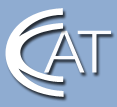Explore high-paying careers in clean, high-tech Connecticut manufacturing.

Educators: Externships
Work-based Learning Projects for the Classroom
Project: The Myth of Light Interference
Name of NGM Educator: Peter Poulos, Engineering Professor, Manchester Community College |
Name of Host Company: University of Connecticut Photonics Laboratory |
Grade Level: For freshman/sophomore level college students |
Student Work Types:
|
Task Abstract: The basic goal is to illustrate that "Light does not Interfere with Light" and that constructive and destructive interference does not apply to electromagnetic waves. |
Task Objectives: To illustrate through experiment, time and frequency domain mathematics that light of different frequencies will not interfere with each other. The detectors that we see through give the illusion that interference has taken place. |
Esssential Understandings/Questions:
|
Task Description: Students will be required to answer questions based on observations. Specifically: what causes patterns; when a change to a mirror or grating occurs - describe the result; and what is meant by constructive and destructive interference as it relates to electromagnetic waves. Students will construct Michelson Interferometer and Fabry-Perot setups in order to observe the fringes and the changes to fringe patterns as you adjust and tilt mirrors, lenses and gratings.
|
Resources Required: HeNe Laser , tilt mounts, optical breadboards, Beam Splitters, Lenses, etc. All required equipment to perform experiements has been purchased by Manchester Community College. |
Prior Learning Required: None |
Educator Comments: This lesson should be an eye-opener for students and hopefully will provide some incentive to study optics, electro-optics or related subjects. |





